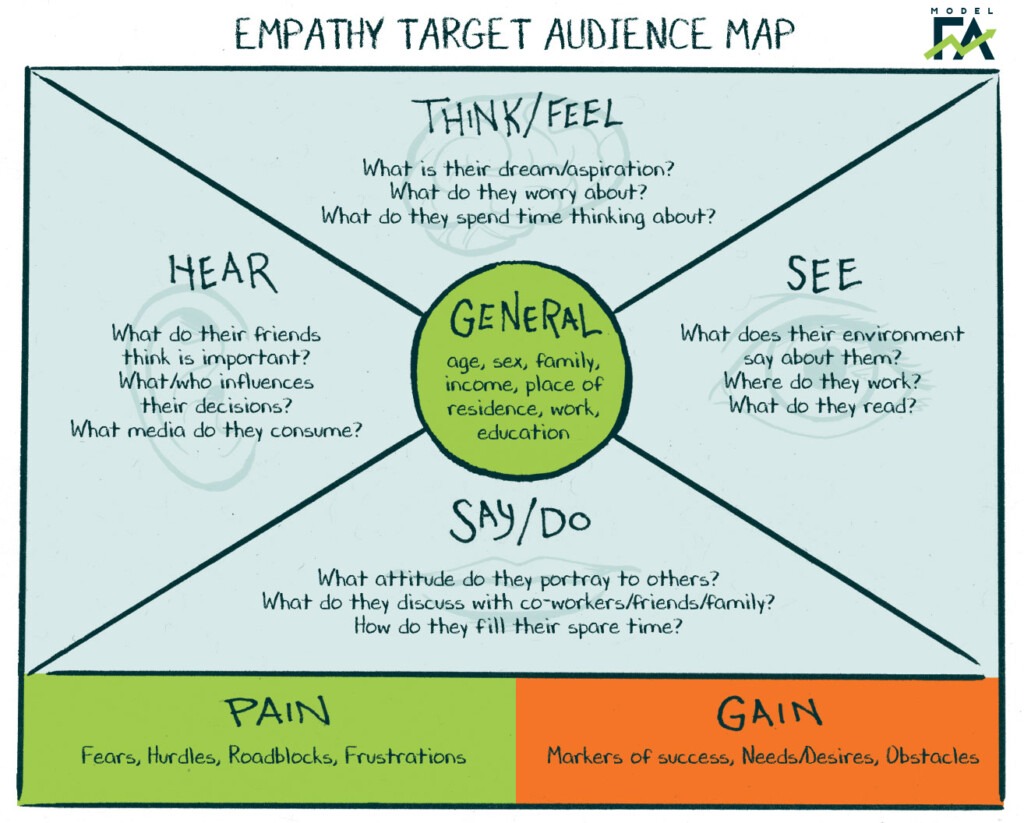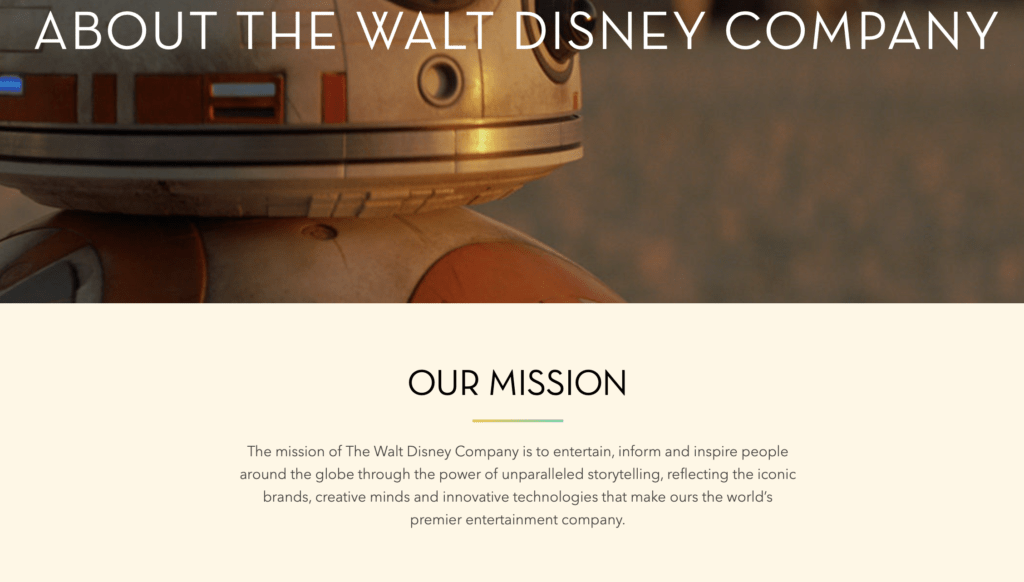Beyond a Logo: Financial Advisor Branding that Resonates
06.22.19 | Eric Lee | 0 Launch
Pulling back the curtain on brand identity
Ask anyone to describe what makes strong financial advisor branding, and they’ll likely start with a list of the obvious. Logo, colors, fonts and a catchy motto or slogan …
While all of these elements are certainly parts of a brand identity, in the grand scheme of things they are a superficial part of a much broader picture. A brand goes beyond the look of its marketing materials to a deeper place.
Is Disney known primarily for their handwritten logo (which, by the way isn’t actually Disney’s signature)? Or are they known for the way they make people feel through discovering or rediscovering the magic of fantasy and childhood?
Is Nike championed for their “swoosh” — or for emboldening everyday people to feel like they, too, can be an athlete, conquer the impossible, and face the unknown?
Is Apple loved for their partially consumed fruit logo — or for the feeling of ease and accessibility that their products deliver to the end user?
Ultimately, a strong brand, the kind of brand that truly resonates, makes impact and creates strong loyalty, is less about aesthetics — and more about how that brand makes people feel.
Check out: Model FA Podcast Episode #8: Featuring Eric Lee
Before logos, colors and slogans, a company must first work through questions about their products, their philosophy, and perhaps most importantly, their target audience. What ideals are they truly championing? And who are they championing them for?
Even when thinking about financial advisor branding, these questions become paramount to breaking through the noise. The answers can help you shatter the negative stereotypes that unfortunately permeate the industry and connect with the people who need your financial guidance.
So, where do you start with financial advisor branding?
The first step is to construct a profile for your ideal client or customer.
Until you’ve identified common characteristics and traits for who you are selling services/products to, you can’t effectively develop an advisor brand identity, a marketing strategy, or marketing materials.
One effective tool that will help you get inside the mind of your customer is an empathy target audience map.This exercise helps you explore the way a client thinks/feels, sees, hears, talks/acts in his or her environment. It also helps you think about what pains they have that your brand and company could help fix, and what they could gain by working with you.

Start in the middle of the chart with the “general” section and fill out basic demographic info first.
Next, move to the psychographic sections starting with the think/feel section at the top and making your way around the circle. Feel free to use listed questions as a jumping-off point, but certainly don’t limit yourself to only answering these questions. The more in-depth and complex you can get with your profile, the more useful the map becomes.
Once you’ve finished the four “sensory” sections, wrap up your chart by using them to summarize the pains and gains your customer feels. After you complete this mapping exercise, you’ll have a much stronger understanding of your target audience. That understanding will inform the rest of your brand strategy.
But what about the vision?
Vision and mission come next. While interrelated, the two differ in structure and purpose.
A vision statementis a high-level aspirational declaration that explains what you want to become and/or where you aim to be as a company. Ideally, it should fit in a single sentence. The purpose of a vision is to inspire your potential customer to action. A company’s vision statement will likely remain the same throughout its life.
A mission statementis a granular look at how you will get to where you want to be. This should be the first thing you develop, since it will define your purpose and primary objectives through the lens of who you are and what you value. A mission statement is often three to four sentences, sometimes longer. Its purpose is to inform a potential client about how you can affect their life. A mission statement should evolve and change as your business grows.
Let’s look back at those examples from above. Here is Disney’s mission:

In turn, Disney’s Vision Statement is a direct and aspirational: “to make people happy.” It’s a simple and hopeful message that’s universally appealing.
While 80 years ago Disney might not have considered themselves providers of technology, their current mission statement has evolved beyond simply being a creator and purveyor of entertainment (though this clearly remains a core value as well).
Nike positions their mission statement in a more succinct fashion than Disney:

Their corporate vision is “to remain the most authentic, connected, and distinctive brand.”
The Nike mission is incredibly inclusive and reflects their desire to truly be a brand for all people, not just those who are or who fancy themselves an athlete. Their vision statement is interesting in that it takes a different tone than you might expect. It speaks to the aim of the company beyond actual athletic apparel or equipment.
Apple’s mission directly mentions its products:

Unlike the other two examples, and frankly the typically recommended format, Apple’s Vision statement is very robust:
“We believe that we are on the face of the earth to make great products and that’s not changing. We are constantly focusing on innovating. We believe in the simple not the complex. We believe that we need to own and control the primary technologies behind the products that we make, and participate only in markets where we can make a significant contribution. We believe in saying no to thousands of projects, so that we can really focus on the few that are truly important and meaningful to us. We believe in deep collaboration and cross-pollination of our groups, which allow us to innovate in a way that others cannot. And frankly, we don’t settle for anything less than excellence in every group in the company, and we have the self-honesty to admit when we’re wrong and the courage to change. And I think regardless of who is in what job those values are so embedded in this company that Apple will do extremely well.”
Really, though, the first three sentences of this longer statement capture the heart of the Apple brand: to make great products, to innovate, and to focus on the simple instead of the complex. It’s interesting to note that Apple chose to highlight their intention to not focus on projects they don’t find meaningful or important.
Back to the advisor brand!
So what about your own mission and vision statements? How do you fashion a message that truly captures your short and long-term objectives as a company?
First, think about your target audience and about yourself. Define who you are, determine your short-term business objectives, and outline your plan to attain them.
Answer the questions: “What do we do?” “What makes us different?” “How do we plan to get where we want to be?” Once that process is done, you’ll have a rough mission statement you can hone and tweak until you’re satisfied.
Next, broaden your brainstorming to look towards your long-term goals. Answer the question: “Where do we aim to be?” “What is our purpose?” “What are our values?” Work to get to the heart of your hopes and desires as an organization. Then, distill them into a short, impactful message that encapsulates your vision.
There’s much more to financial advisor branding — and we will cover it in upcoming posts. For today, remember that the target audience map and mission/vision statement brainstorms are a great place to start when establishing a strong brand identity. Gather your team (or a few creative and strategic thinkers in your inner circle if you’re working alone). Spend some time working through these important exercises together. It will be time well spent!
See also: Building a Financial Advisor Marketing Plan that Works
